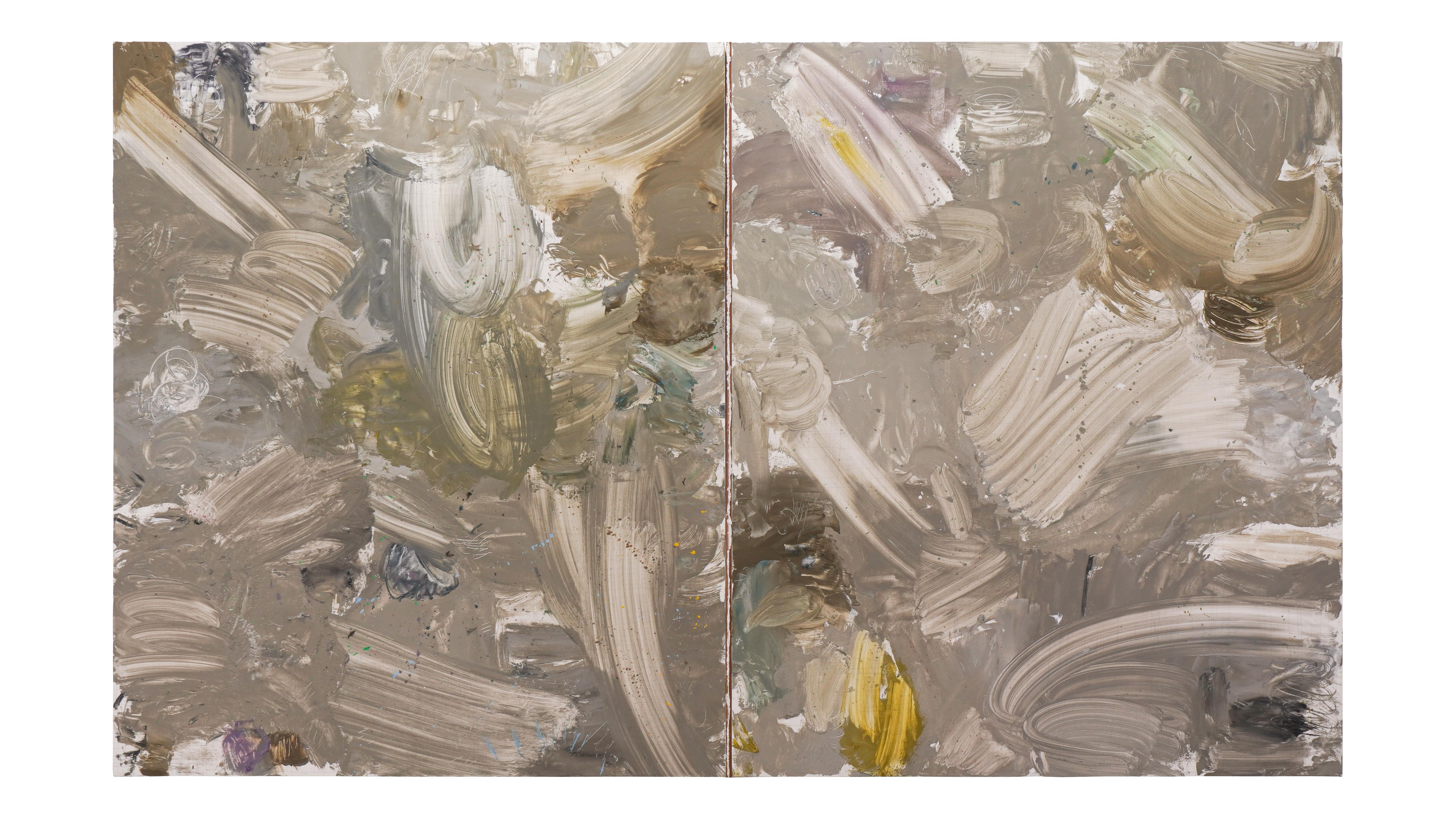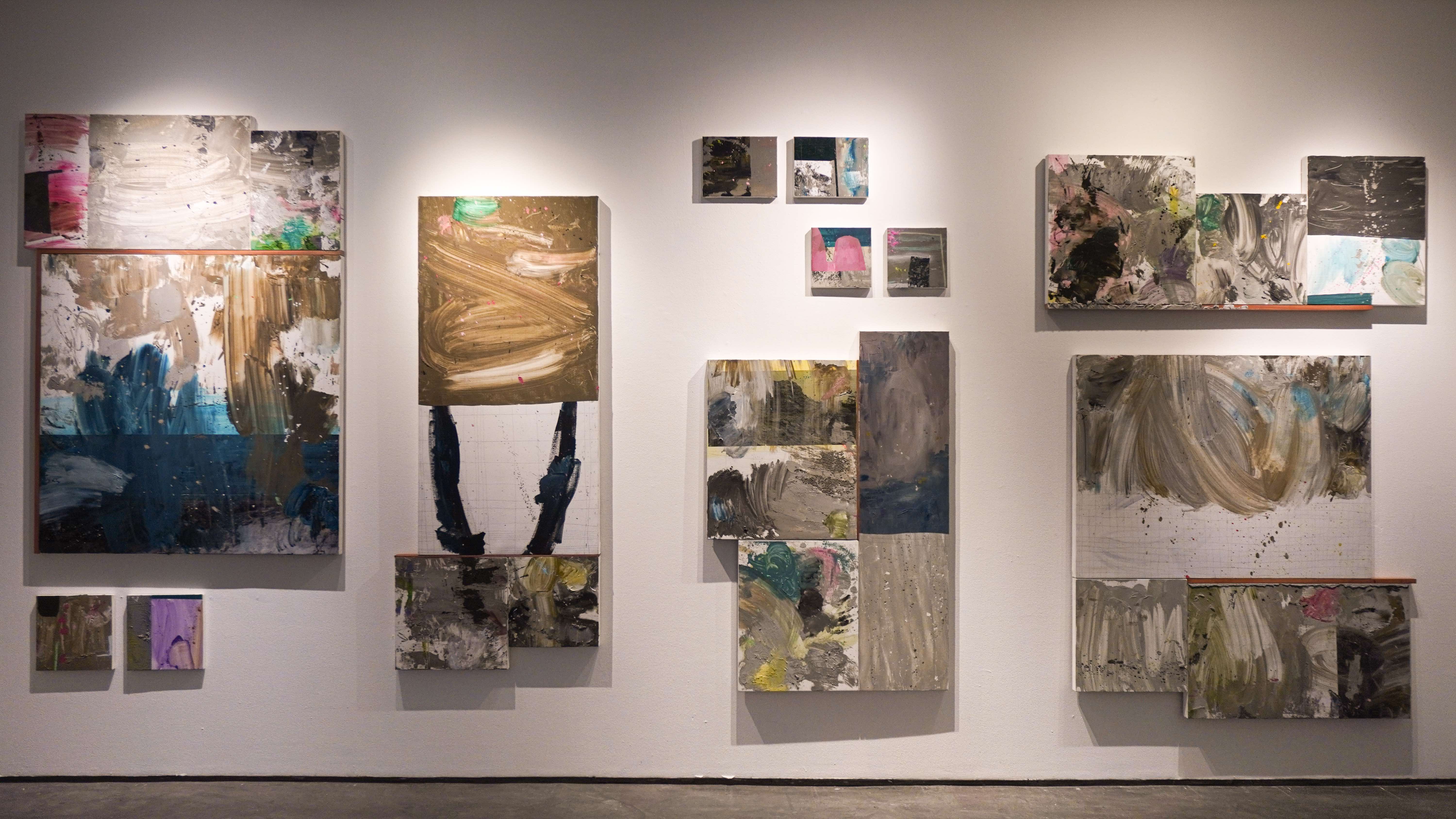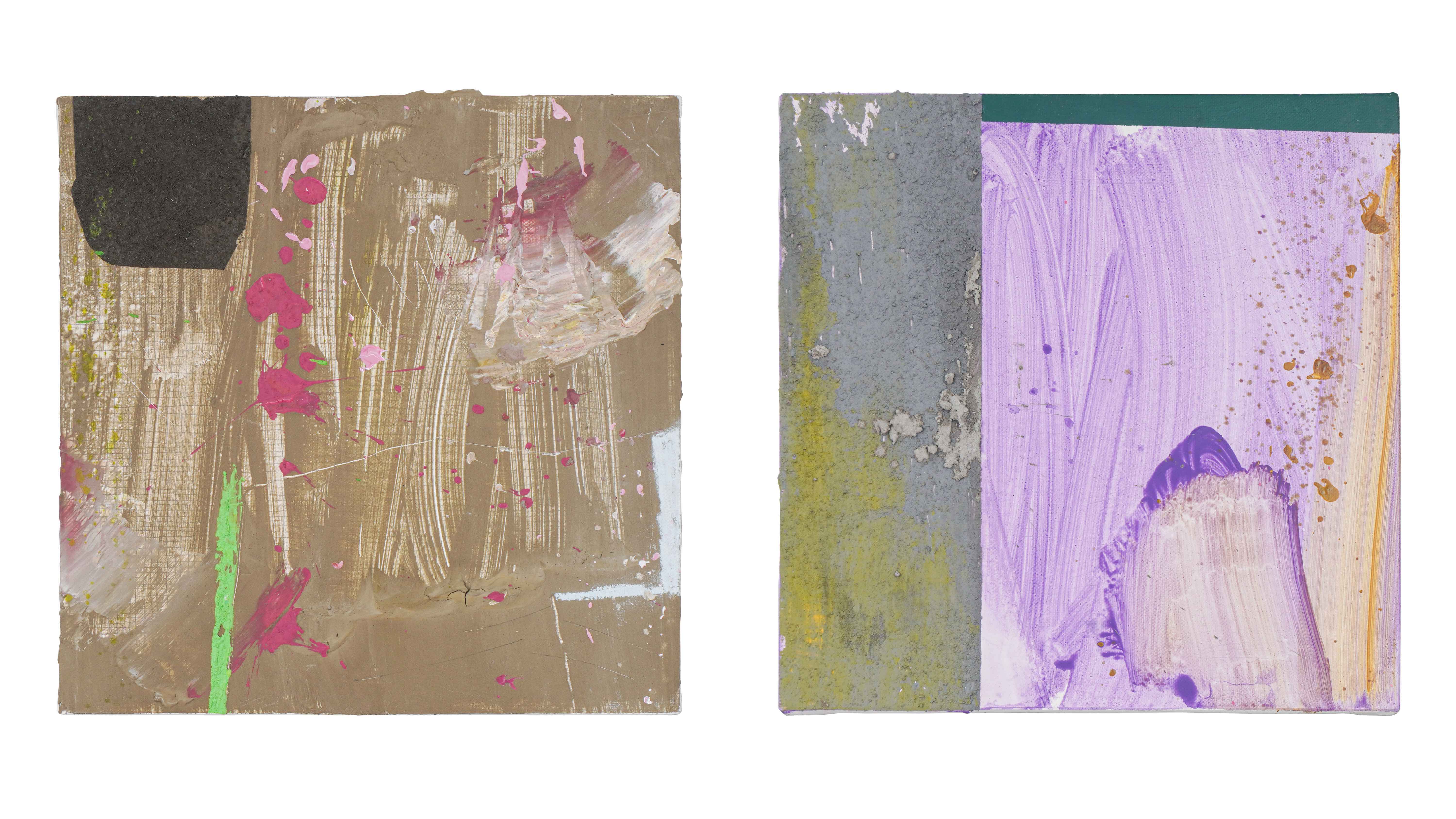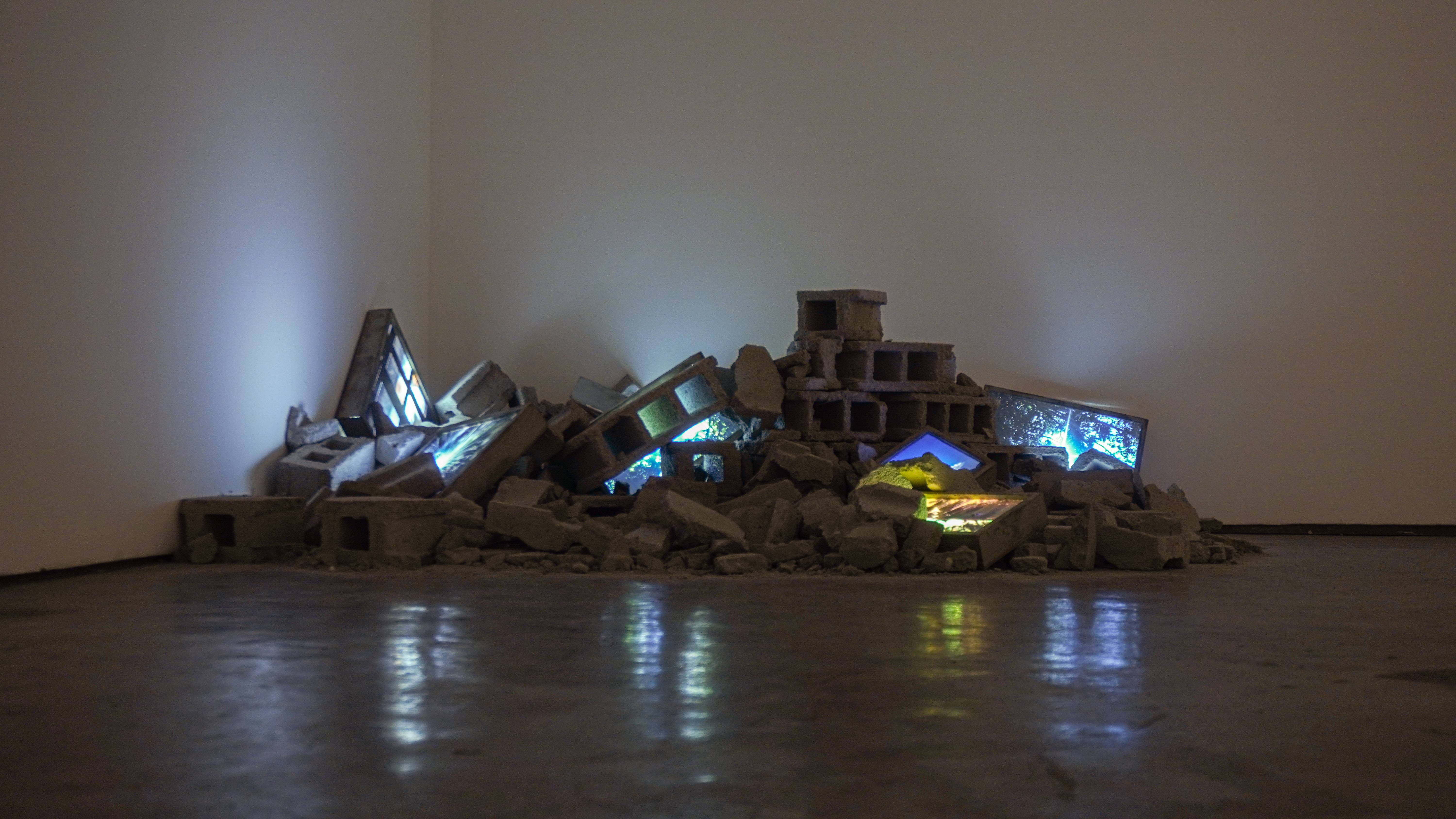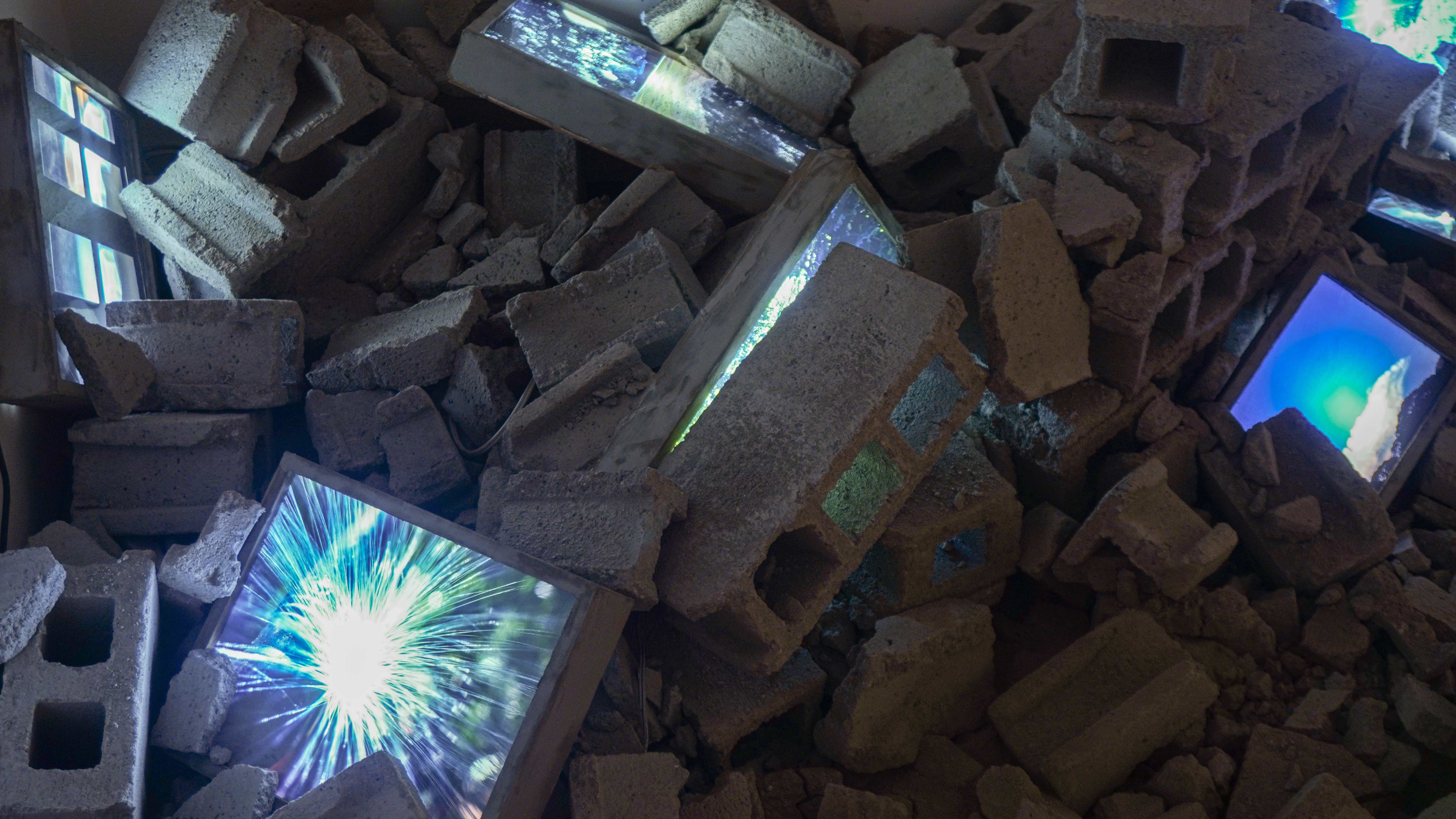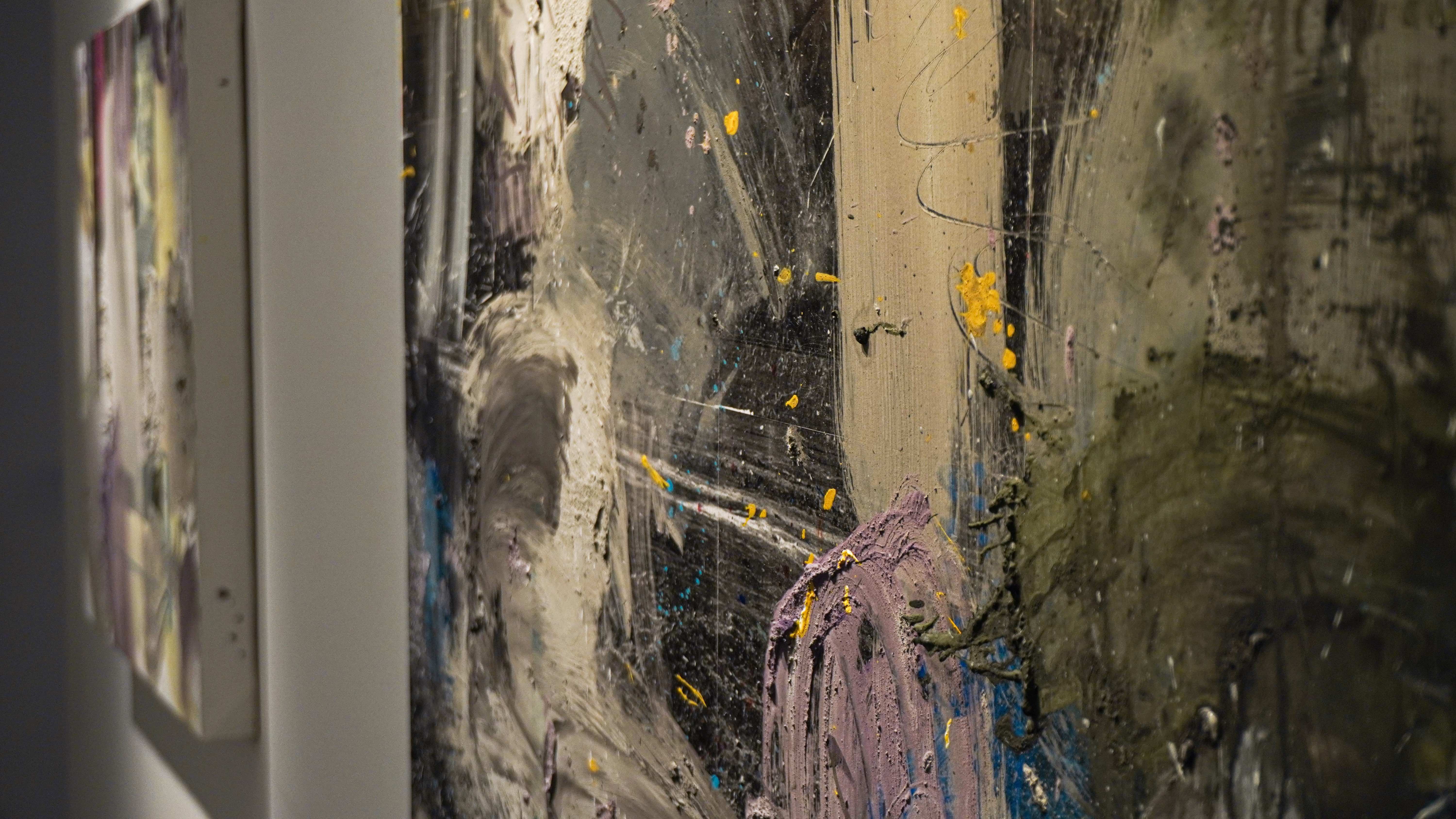We envision paradise as a place frozen in time. A blissful vignette crystallized along with all our happy memories of it. But in reality, paradise is also ephemeral. It’s an unfortunately familiar scenario. We bid farewell to a place or moment in our lives, and in the process lose safety, purity, innocence, and unadulterated happiness. It’s almost as if the very notion of paradise itself invites reservations. Even skepticism. How can a place so perfect, so untouched by any sense of the outside world, actually exist? Is paradise real, or can our pursuit of happiness be more misleading than we realize?
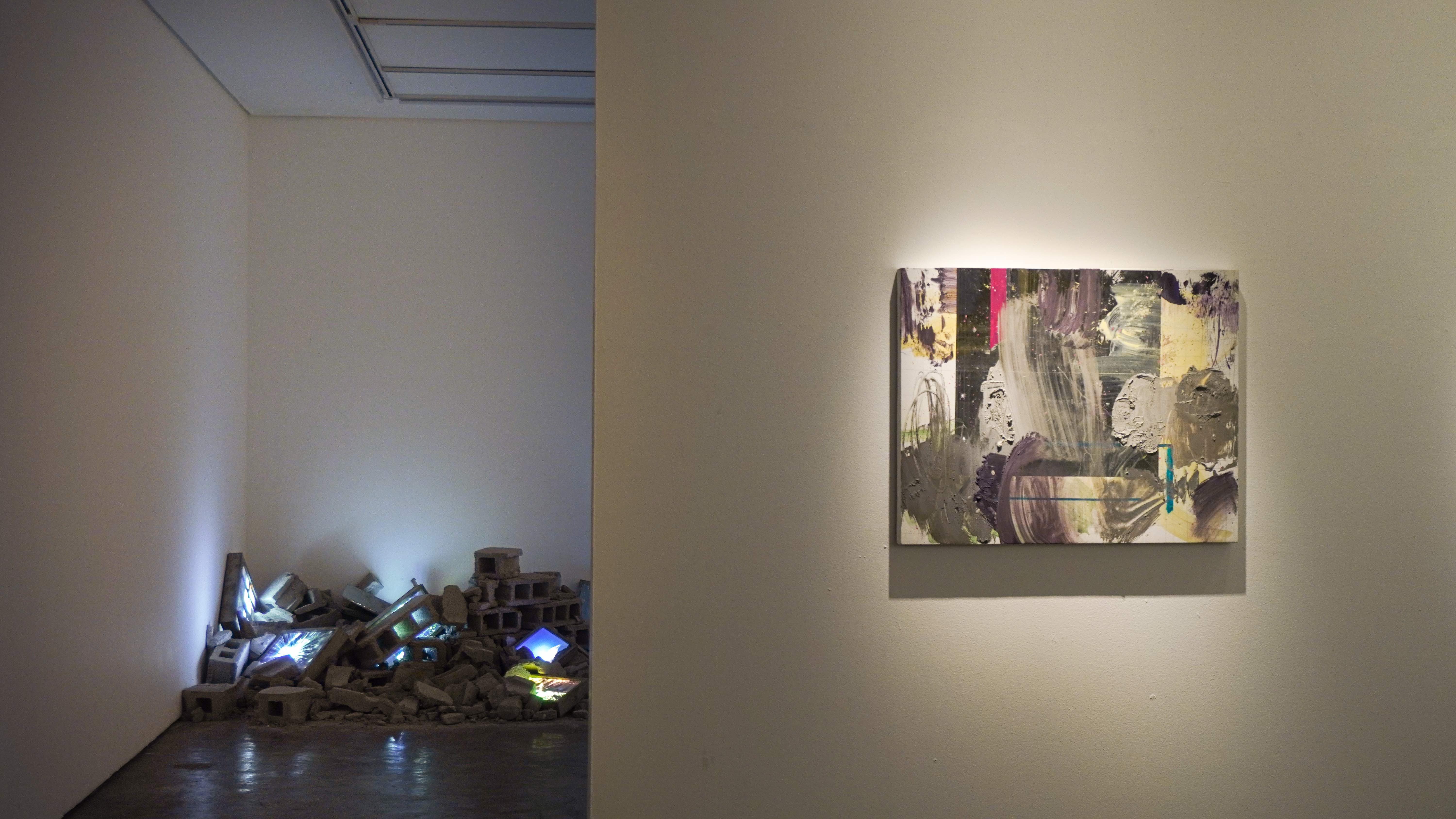
Zean Cabangis is an artist whose works contemplate notions of place. In Nawawalang Paraiso, he turns toward the mysterious nature of paradise. He grapples with concepts both abstract and quite literally concrete as he attempts to define what paradise means when life more often than not appears to negate the idea. Cabangis presents a series of mixed-media paintings of various sizes and seemingly various states of finish: chaotic, haphazard, and in a frenetic search for some kind of elusive internal expression. The centerpiece for the show is an installation of backlit prints strewn among hollow blocks and rubble. Ruin it may be, yet in the dimly lit gallery, it lies illuminated by the images and paths that appear to have withstood the destruction.
Entering the exhibit space, we are met with three large works on canvas. ‘Same Horizon I’ and ‘Same Horizon II’ bear as much of the energy of Cabangis’s brushstrokes as they do his thoughts. With every large swipe across the surface, we feel the visceral intent that digs so deeply into the work, it scrapes off the underlying paint to reveal the pencil-lined canvas underneath. There is a sense of a search or an attempt to make something coalesce.
In ‘A Subtle Sign of a Glimmer,’ our eyes dart from one side of the large diptych to the other, following the tumultuous trails of the artist’s brush. On the bottom of the canvas, a hint of yellow. Whether this is the glimmer or not is up to the viewer. The search, regardless, persists through winding and broken paths.
One might describe Cabangis’s paintings as appearing unfinished. In ‘Soft Fascinations II’ two earthy gray and brown works border a central stretch of canvas that lies mostly bare, with only two large swathes of blue, seemingly connecting the top to the bottom of the work. The bare bones of the canvas lie exposed.
In the diptych ‘Distant Island,’ the paint is scratched through, erased with as much conviction as the pink splatters that cover it. Purple is washed so thin, only a buildup of paint gives a hint of the original hue. Working in a realm as distinctively abstract as Cabangis’s, how do we decide something is unfinished? There may be something about the way the artist composes his works that leaves us searching for more, as if they were clues to an ongoing journey. Cabangis’s precision and playful abandon with everything, from materials, to color palettes, to compositions, are reminiscent of construction. Rather than seeing something as unfinished and crude, we are reminded instead of their unique intrinsic beauty – the natural beauty of creating.
There is a variety of different canvases, some bound together by structures, others of small to middling sizes, lined side by side. Yet all these works are connected by common materials: cement and pumice. Cabangis mixes these into the paint, giving his works a rough, textured finish. As he describes in the exhibition notes, cement can dry quickly, so he works with his paints equally as fast. “I mimic the rough movements of laborers, which are not precious or delicate,” the artist says. And yet, there is delicateness and much care in the way Cabangis emphasizes the work that goes into creating a finished piece—the labor that births the proverbial fruit. Cement is a symbol of structures that last. In Cabangis’s art, we see more than the finished artwork persevering.
At the corner of the gallery space, we find a heap of hollow blocks, dust, and dirt. Scattered among the blocks are glowing images taken by the artist: photos of natural scenery. In this installation, ‘Glimmers,’ we might observe this work closely and notice several dualities. There is destruction, but at the same time a sense that something can still be reformed. There are places found and among the debris, places lost. Exhibition text writer Stephanie Frondoso calls this fusion “a junction of natural world and built environment.” The title Nawawalang Paraiso itself can be ambiguous. Could ‘nawawala’ mean that paradise has totally disappeared, or is it in the process of vanishing, still with a hope that it may be found?
The exhibition text recalls an anecdote from Cabangis’s childhood. The artist first learned of the word ‘paraiso’ at a resort he would often visit when growing up. There, at the peaceful sight of the resort’s pool, with the water reflecting the idyllic skies and lush trees, he was convinced he had found paradise. As children, we’re often quicker to call a place paradise as we enjoy life free from the cynicism of adulthood. As adults, can we return to our childhood paradise and still view them the same way? Or do we altogether accept that we can no longer find these safe havens for ourselves?
We may all be unconsciously striving to get to our own paradise. We work and toil to get to a literal place or stage in our life where we can allow ourselves to feel as blissfully naive as when we were children. In a global context, people travel for vacation, enlightenment, knowledge, or pure survival, in the hopes they can find, if not paradise, sanctuary. But as Cabangis reflects in his work, the foundations upon which we build our ideas of perfection can be both fragile and entirely subjective. Paradise may be an actual place for some, but it can also be an idea for others. A mental blueprint around which people build whatever creations their lives are anchored upon. Yet the search continues, and the journey unfolds in leaps, bounds, and twisting roads. Does paradise exist? It’s not out of young naivete, but of necessity that one must dream so.
Nawawalang Paraiso ran from August 8 to September 5 at Artinformal Gallery.
Mara Fabella is an artist, writer, athlete, and cat mom.



